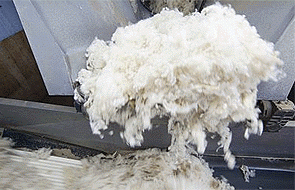
By Allan Barber
Sheep farmers have the chance to vote for or against a compulsory levy under the Commodity Levies Act (CLA) in October.
The Wool Levy Group’s proposal indicates a levy of 3 cents a kilo which would raise $4.7 million to be spent on a combination of education, communication, advocacy, R&D and administration.
This is either too much, far too little or a worthwhile beginning which depends on your point of view.
In this week’s Farmers Weekly Ruth Richardson argues very strongly against wasting any more farmer money on a compulsory levy, citing quite justifiably the enormous waste of funds both by the Wool Board and on its subsequent disestablishment.
On the opposite side of the fence sit the Wool Levy Group and its supporters.
Of course Richardson speaks from the perspective of being Chair of the NZ Merino Company which broke away from the Wool Board after successfully arguing for the separation of merino farmers’ levies from the confusing morass of overhead and expenditure on wool, both beneficial and useless.
She maintains what the wool industry needs is more market, not more levy and highlights the success of NZ Merino in ‘facing and making markets from consumer to grower’ as the best way of moving up the value chain.
Of course she is probably correct because you can’t argue with the profitable performance and success of NZ Merino since it went solo. But my feeling is this point of view may be a bit too simplistic for the rest of the wool industry which covers a much wider spectrum of wool types, microns and end uses.
Merino has the advantage of being a more easily promoted fibre with its predominant application for high quality and high fashion woollen clothing.
In last week’s Farmers Weekly Steven Fookes argued the necessity of the industry investing funds wisely in promoting the unique characteristics of wool to bring wool back to the attention of retailers, designers and architects who are looking for just such a fibre.
There are two examples of industry initiatives which are doing just what Richardson and Fookes say should happen, both achieved without the imposition of a commodity levy and both concentrating on strong carpet wools at the opposite end of the spectrum from merino..
Wools of New Zealand has 700 shareholders representing 14.5 million kilos of strong wool and with the Laneve brand has a number of carpet yarn and carpet manufacturers as partners in North America and the UK.
Elders Primary Wool’s efforts and progress with Just Shorn in the USA are a prime example both of what can be achieved with selective distribution and targeted promotion as well as the time it takes to achieve the objective. Just Shorn is specifically focused on promoting wool’s qualities for carpets to top end flooring retailers in the retail group which are franchisees of CCA Global Partners.
Therefore the big question is whether a levy is likely to produce better or quicker results than the industry has achieved of its own accord.
The main benefit of a levy would be to capture all wool growers, not just those that have been willing to invest in one or other of the initiatives.
But then one must ask if the small amount of funds raised in a levy would be better spent on the existing initiatives rather than being applied to a new organisation with another overhead structure. Richardson’s point the amount available for R&D will go nowhere is undoubtedly correct, while even $3.2 million for advocacy and education to raise demand is unlikely to go very far or achieve any measurable improvement.
Fookes’ comment about the importance of industry investment is also quite right, but it is already happening without a levy.
A better solution would be to try to build on the moves towards industry rationalisation which have started to happen with the Primary Wool Cooperative’s offer for a 5% share in Wool Equities and chairman Bay de Lautour’s stated desire to merge PWC with Wools of New Zealand to form a single farmer owned organisation.
None of this will happen in a hurry, but it seems to me to be a tidier solution than to set up a new organisation which harks back to the days of the Wool Board.
As with the meat industry the challenge will be to get all growers to agree what they want and are willing to pay for, but the focus on strong carpet wools would be a clear goal which all strong wool growers should be prepared to support.
-------------------------------------------------------------------------------------------------------------------------------------------
Farms For Sale: the most up-to-date and comprehensive listing of working farms in New Zealand, here »
-------------------------------------------------------------------------------------------------------------------------------------------
Here are some links for updated prices for
- lamb
- beef
- deer
- wool
Wool indicator prices
Select chart tabs
---------------------------------------------------------------------------------------
Allan Barber is a commentator on agribusiness, especially the meat industry, and lives in the Matakana Wine Country where he runs a boutique B&B with his wife. You can contact him by email at allan@barberstrategic.co.nz or read his blog here ». This article first appeared in Farmers Weekly and is here with permission.

We welcome your comments below. If you are not already registered, please register to comment.
Remember we welcome robust, respectful and insightful debate. We don't welcome abusive or defamatory comments and will de-register those repeatedly making such comments. Our current comment policy is here.